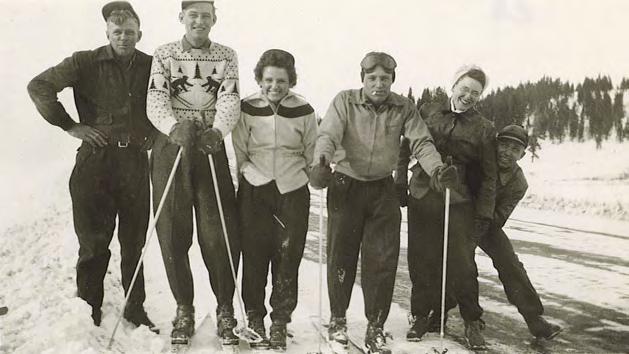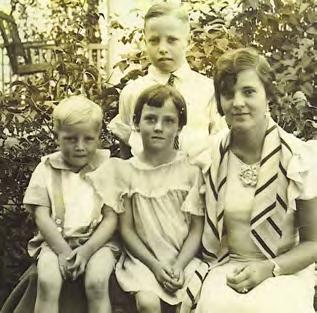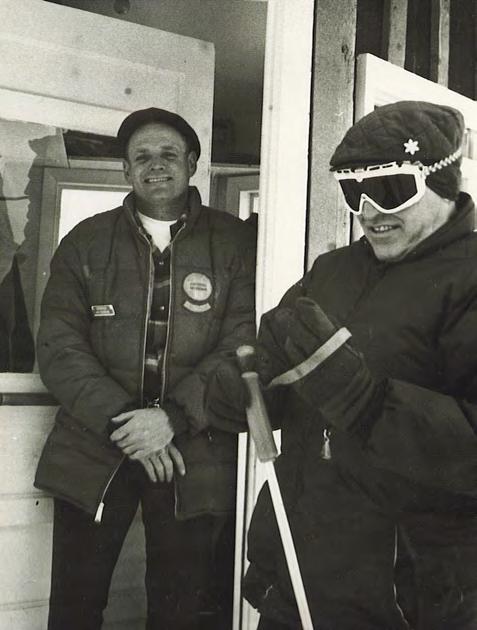
2 minute read
History
Melvin Hitchens with skiers.



Ski patroler Errold with Melvin.
Errold Hitchens
Errold, Wilma, Melvin and Dorthy Jean Hitchens. The Hitchens Brothers: A Lasting Legacy| BY DAGNY MCKINLEY PHOTOS COURTESY HITCHENS FAMILY
When people think about how skiing shaped Steamboat Springs, the names Buddy Werner and Carl Howelsen come to mind. Yet the development of skiing as an industry was the result of a community working together, experimenting and having fun. Brothers Melvin and Errold Hitchens were part of it all.
Melvin and Errold’s grandfather, along with his brothers, Joe and Bill, were among the first people to ranch in the Yampa Valley in 1884. They started a family tradition that lasted over 100 years. By the time Melvin was born in 1923, skiing – which was then referred to as snowshoeing – was a form of transportation in the winter. When Melvin was two, his father bought him a pair of skis and he was hooked. Melvin’s sister, Wilma, and brother, Errold, spent winters skiing from their ranch to the train station in Milner, hopping off in Steamboat Springs, skiing all day on the slopes, then returning home with a final ski to the ranch. Meanwhile, Melvin would be doing chores.
Those early days led to a lifelong love of skiing. Burned in a gas explosion at the Tow Creek oil fields, Errold found peace through being on the mountain. He became one of the first paid ski patrolmen on Mount Werner, which at the time was named Storm Peak. The name was changed to honor Olympian Buddy Werner, who died in an avalanche in the Swiss Alps in 1964. Errold and Buddy were the first two skiers in town to own metal skis. As part of Errold’s service, he helped build Christie and Thunderhead lifts and gave money to make sure Howelsen Hill’s Poma lift was installed. His reward was $1.75 an hour as a ski patrolman. Errold’s first year, more than 12,000 skiers hit the slopes and Errold, along with one other patrolman, helped 89 people who were injured off the mountain. He later sat on the board of the Steamboat Springs Winter Sports Club, which he believed should be inclusive of every child in the community, regardless of gender.
Melvin had a more relaxed take on life. According to his niece, Diane Hitchens Holly, Melvin was once referred to as Steamboat Springs’ oldest ski bum who had two loves: skis and shes. Melvin spent much of his life trying to figure out how to make a living without working. When stocking a trout pool in the spoils of a strip mines didn’t pan out, Melvin charged the county to cross his property in order to get to the Milner dump. Between that and later selling the dump, he no longer had to work and he had enough money left over to donate $100,000 to the Winter Sports club, which paid for equipment, passes and hot chocolate for the kids at Howelsen Hill.
Melvin funded the Hitchens Brothers Jump Series at Howelsen Hill and was one of the early supporters of women ski jumpers, recalling that when he was growing up, the girls could easily out-jump the boys. He also funded a scholarship for female ski jumpers.
Although their contributions to skiing in Steamboat Springs were wildly different, Melvin and Errold made skiing in Steamboat Springs what it is today.










